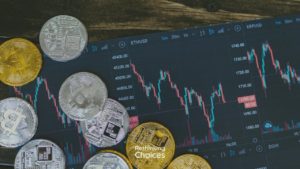So, Powell & co are coming out in a few hours after having spent the last 2 days deliberating how they actually ended up here. By here, I mean 7% negative real yields, a still ongoing monstrous balance-sheet expansion, full employment and an equity market that has decided to start wobbling. While the latter is a sudden, but perhaps not totally unexpected occurrence after the belated Santa-rally, the rest cannot possibly just have dawned upon the FOMC.
Jerome and his disciples find themselves in the unenviable position of badly lagging reality despite their recent “hawkishness” (n.b. the quotation marks) and in the words of the immortal Joey Tribbiani, it could reasonably be said that they are so detached from reality, the inflation print is a dot to them (pun intended). How will they attempt to revive the Fed-put without losing whatever remaining credibility they still have stashed away in their vaults?
While buying Spoos and Naz at 4250 and 13200 has worked out nicely in the last 48h, the structurally bullish equity story which has been sold by everyone involved in the game over the last 18 months has been dented. Badly. That is not to say equities will uniformly collapse from here, but technically, we’ve spent a fair few months churning and it’s worth remembering that Asian stock markets actually peaked a year ago. From here stock selection will prove absolutely critical for those of you who want to remain “fully invested” (another great slogan from the industry), and managers with alpha focus (not only levered beta, which basically has been the case for the vast majority of those who have outperformed indices since the summer of 2020) and the skill-set to match that ambition will thrive.
What will the Fed do ? I suspect they have no option but to stay the course at this very moment by repeating the promise of 3-4 hikes this year and a rapid unwind of QE. If the alphabet soup of CPI/PPI/PCE/JOLTS etc continues to paint a story of extensive price pressures and tight labour markets, not even the soothing words of Jerome (he and the rest of the committee will NOT want to leave their paw prints on an equity crash, so expect them to keep using expressions like “contained price pressures” and “supply chain-related price increases” whenever possible) will be enough to steady risk assets over the coming months. At the end of the day, more than 30 years of managing investment risk have told me many things, and the most important one with regard to policymakers is that it’s better to take note of what they do, rather than listen to what they say because talk is cheap. Or in the words of Chocolate Milk – Action Speaks Louder Than Words. A not-completely-crazy 50bp move in March to attempt to rescue some credibility should not be viewed as an impossibility, and if that turns out to be the case, we are about to find out who went swimming naked this winter.
What should you do? The last couple of months have really been a period for me of taking the chips off the table when the market allowed it, and levels are still elevated. If you spent the last 18 months buying beta in the dip (well done!), you should now look at it with fresh eyes and try to do the opposite – sell rallies. This is obviously easier said than done, because there is after all nothing worse than observing your neighbour getting richer than you, but sometimes the best trades are the hard ones. This is such a moment. When you buy the dip, buy individual names, not indiscriminate beta, be nimble and disciplined, don’t overextend yourself and most of all, be humble. In aggressive dips (they will come, trust me), buy shares in companies that provide goods and services that are really needed, when discretionary incomes get crunched. Avoid over-levered, over-hyped businesses which rely on the future and the promise of cash flows. Yes, corporate balance sheets are in much better shape now than in 1999 or 2007, but it’s not only financial leverage that matters. All the supply chain issues, as well as the Covid pandemic, have told a story of how operational leverage is just as important. When looking at the risks facing companies in a world no longer underpinned by policymakers ready to do-whatever-it-takes, it is worth spending your time thinking this through, because geopolitics will also matter hugely in the medium-term future. If that scares you as an investor (it should) when you start putting risk-premia into your excel-sheet, then perform the same exercise again and start factoring in some adverse impact from incoming climate change. That should leave you with a pretty small universe to pick from. They are not the names you immediately think of but buy them when the market tanks – because others will.



